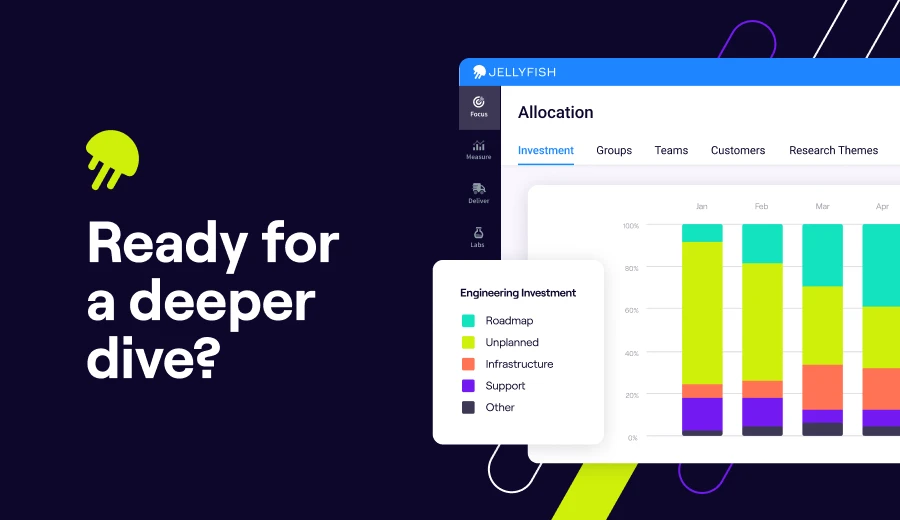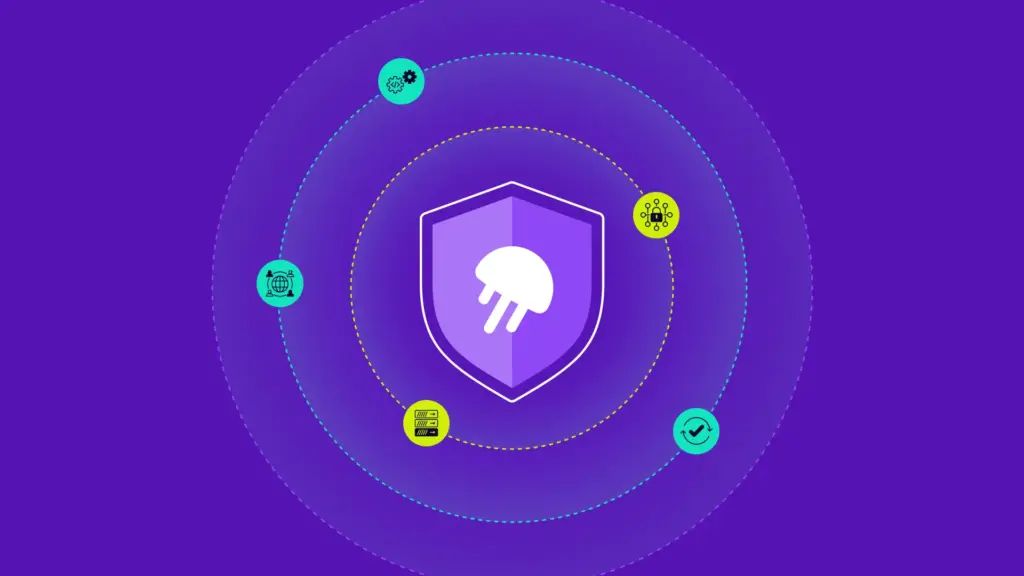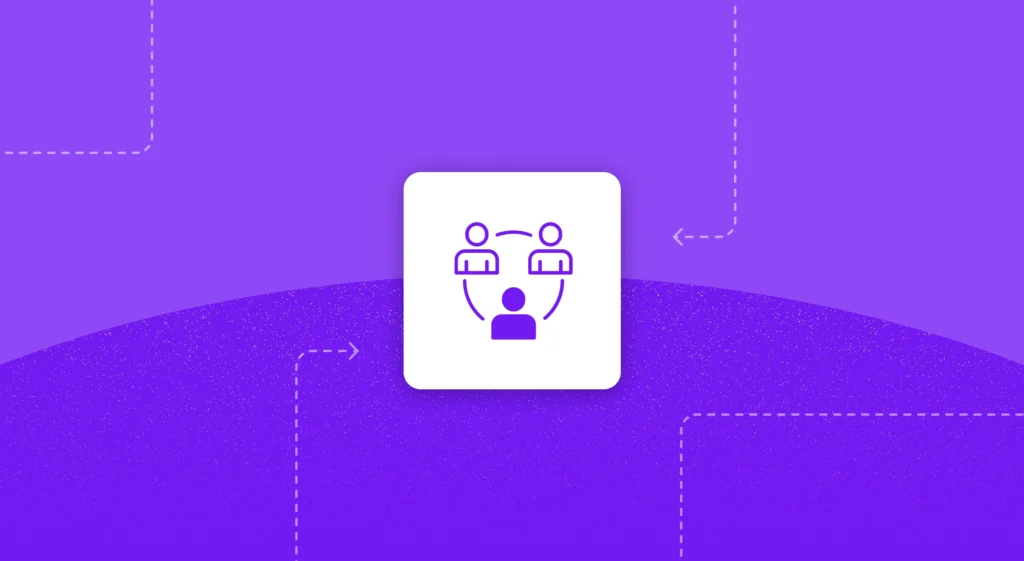In this article
In a perfect world, your development and operations teams work together seamlessly and happily. Your processes leverage full automation, as well as continuous integration and continuous deployment to ship high-quality software quickly. Every decision is data-driven. Teams enjoy a robust culture of collaboration and constant innovation.
However, Rome wasn’t built in a day. And most likely, it will take time and effort before you can perfect DevOps in your organization as well.
This is where DevOps maturity models can be a handy tool. By pinpointing where your organization sits within the scale of immature to sophisticated DevOps operations, you can create a clear roadmap for DevOps growth and advancement.
What Is a DevOps Maturity Model?
What Is a DevOps Maturity Model?
A DevOps maturity model is a structured framework that dev teams can use to evaluate the sophistication of their existing DevOps practices and create a path for advancement on their DevOps journeys.
You can think of a DevOps maturity model as a roadmap that guides teams from basic implementations to a highly optimized and efficient state. DevOps adoption is broken into distinct stages, each representing increasing levels of sophistication. These stages often range from an “initial” phase, where DevOps principles are in their infancy, to an “optimized” phase, where continuous improvement is ingrained in the organization’s culture.
By assessing their current position within this framework, organizations can pinpoint areas that require attention and prioritize their efforts for improvement toward a more sophisticated DevOps program. This might involve enhancing automation, fostering better collaboration between development and operations teams, or implementing more robust monitoring and feedback mechanisms.
DevOps maturity models are important because they provide a clear and objective assessment of an organization’s DevOps capabilities. It allows for benchmarking against industry best practices and facilitates a culture of continuous improvement. Ultimately, the goal is to drive increased efficiency, accelerate release cycles, and enhance the overall quality of software delivery.
The 5 Levels of DevOps Maturity
The 5 Levels of DevOps Maturity
The DevOps maturity model is a framework for organizations to understand and improve their DevOps practices, typically comprising five distinct levels. These maturity levels progress from chaotic, manual processes to highly efficient, automated workflows.
Each DevOps maturity level builds on the previous stage. Typically, the five DevOps maturity levels look like the following:
- Initial
- Managed
- Defined
- Measured
- Optimized
The number and naming of levels might vary, but generally, the methodology and idea behind each are the same.
1. Initial (Ad Hoc)
At this stage, organizations are just starting on their DevOps journeys. Teams will lack standardized or consistent development processes, won’t use any or much automation, and may struggle with siloed work. Overall, this environment contributes to infrequent and error-prone deployments.
2. Managed (Repeatable)
At this maturity level, organizations have introduced DevOps tools and practices that are becoming repeatable. Teams might use some automation, particularly in areas like continuous integration. Silos may still exist, but team members are likely starting to collaborate more frequently.
3. Defined (Continuous Delivery)
Defined DevOps operations have standardized delivery processes that are implemented across the organization. Automation is widespread, and teams adopt continuous delivery practices for more frequent and reliable deployments. Collaboration between software development and operations teams improves significantly at this stage.
4. Measured (Continuous Deployment)
Organizations with measured DevOps programs have reached the point where they’re measuring and analyzing their DevOps performance using key metrics. Continuous deployment is implemented with automated deployments to production. Teams emphasize data-driven decision-making and use feedback loops to drive continuous improvement.
5. Optimized (Continuous Operations)
This is the highest level of maturity, where DevOps practices are fully integrated into the organization’s culture. This looks like ingrained continuous improvement, extensive and self-service automation, and highly cross-functional teams. Highly mature DevOps organizations focus on optimizing their DevOps processes, infrastructure, and security.
Benefits of Using a DevOps Maturity Model
Benefits of Using a DevOps Maturity Model
DevOps maturity models help organizations evaluate the effectiveness of their DevOps implementation, which can in turn lead to more efficient, high-quality software delivery and better collaboration between development and operations teams.
Here are a few reasons why you might consider using a DevOps maturity model in your organization:
Identifies Areas for More Efficient Software Delivery
A DevOps maturity model helps teams identify areas to streamline workflows and automate repetitive tasks, accelerating release cycles and reducing time-to-market. It also enhances system stability by emphasizing monitoring, logging, and automated recovery, minimizing deployment failures, downtime, and production issues.
Encourages Higher Quality Software
Following a maturity model helps teams embed continuous testing and real-time feedback into their processes, which in turn lets them catch defects early and maintain high software quality. This leads to more stable applications, fewer disruptions, and improved customer satisfaction.
Promotes a Culture of Collaboration, Innovation, and Improvement
Maturity models help break down silos, improving collaboration between development, operations, and security teams. They encourage data-driven decision-making through key performance metrics and create standardized, repeatable processes that drive consistency, adaptability, and long-term success.
Facilitates DevSecOps
Mature DevOps naturally integrates security practices into the software development lifecycle (SDLC), evolving into DevSecOps. By shifting security left, teams identify vulnerabilities early, reducing the risk of breaches. Automation plays a key role, with security testing, vulnerability scanning, and compliance checks embedded in CI/CD pipelines. Continuous monitoring and real-time threat detection further strengthen security by enabling rapid incident response. A mature DevSecOps culture fosters collaboration, making security a shared responsibility rather than a bottleneck. This approach enhances resilience, ensuring faster, more secure software delivery without compromising efficiency.
How to Determine DevOps Maturity
How to Determine DevOps Maturity
Teams measure DevOps maturity using a variety of metrics, tools, and frameworks that assess an organization’s practices, culture, and technology. It’s not just about metrics like deployment frequency; it’s also about how effectively tools are used and how well team members collaborate.
Here’s a breakdown of key ways to measure DevOps maturity.
Use DORA Metrics
DevOps Research and Assessment (DORA) metrics are likely the most well-known metrics for measuring DevOps performance. These include:
- Deployment Frequency: How often code is successfully released to production. This metric indicates the speed and agility of the deployment process.
- Lead Time for Changes: The time it takes for a code change to go from commit to production. This measures the efficiency of the software delivery pipeline.
- Change Failure Rate: The percentage of deployments that fail in production. This reflects the stability and reliability of the deployment process.
- Mean Time to Recovery (MTTR): How long it takes to restore service after a failure. This measures the resilience and recovery capabilities of the organization.
Assess DevOps Practices
Another way to assess the maturity of DevOps in your organization is to look at how well your organization implements key DevOps processes and best practices, such as automation and continuous improvement. Consider the efficacy of the following:
- Automation: Evaluate the extent to which processes are automated, including build, testing, deployment, and infrastructure provisioning.
- Continuous integration/Continuous delivery (CI/CD): Assess the implementation and effectiveness of CI/CD pipelines.
- Monitoring and logging: Evaluate the comprehensiveness of monitoring and logging practices, including the ability to detect and respond to issues proactively.
- Infrastructure as code (IaC): Assess the use of IaC to manage and provision infrastructure.
- Configuration management: Assess how well configuration changes are managed and version-controlled.
Consider Cultural and Organizational Factors
Don’t forget that DevOps isn’t just about which tools and processes you implement – there’s also the culture factor. In addition to quantitative measurements, consider leveraging surveys, one-on-ones, and team discussions to assess how well your team is adopting a DevOps culture. Look at factors such as:
- Collaboration: Evaluate the level and quality of collaboration between development, operations, and other teams.
- Communication: Assess the effectiveness of communication channels and processes.
- Feedback loops: Dig into the effectiveness of feedback loops for continuous improvement.
- Culture of experimentation and continuous learning: Assess the organization’s willingness to experiment and learn from failures.
Leverage Maturity Model Assessments
Run a DevOps maturity assessment to figure out where your organization falls in the maturity model spectrum. You can find DevOps maturity assessments and tools online, or you can build your own based on how your organization chooses to define each maturity level. Just remember to stick with the same maturity levels and definitions when you assess your organization so that teams don’t feel like they’re working toward a moving target.
DevOps Maturity Assessment: How to Evaluate Your Current Level and Pinpoint Areas for Improvement
DevOps Maturity Assessment: How to Evaluate Your Current Level and Pinpoint Areas for Improvement
A DevOps maturity assessment is crucial for understanding where your organization stands in its DevOps journey and for identifying areas that need improvement. Here’s a structured approach to conducting such an assessment.
1. Define Assessment Goals and Scope
First, clearly define what you want to achieve with the assessment. Are you aiming to improve deployment frequency, reduce lead time, enhance code quality, or something else?
Next, determine the scope of the assessment. Will it cover the entire organization or specific teams or projects? Establish clear objectives and success criteria.
2. Select a Maturity Model
Choose a suitable DevOps maturity model as a framework. Options include models based on DORA metrics, proprietary frameworks, or industry-standard models. Make sure the model you choose aligns with your organization’s goals and culture.
3. Gather Data
Collect data on DORA or any other metrics required from your chosen maturity model. You may use existing monitoring tools, CI/CD pipelines, and project management systems.
Also gather qualitative data through interviews with developers, operations engineers, and other stakeholders. Use surveys to assess team culture, communication, and collaboration.
Beyond metrics, consider examining existing documentation, standard operating procedures, and workflows to understand current practices. You may evaluate the use of automation tools, configuration management systems, and monitoring platforms.
4. Analyze the Data
Compare the gathered data against your chosen maturity model’s criteria. Look for strengths and weaknesses in your current DevOps practices and try to pinpoint areas where your organization falls short of desired maturity levels. Look for trends: Are there repeated failures, such as long lead times, in specific areas?
5. Create a Gap Analysis
Next, document the gaps between your current state and the desired maturity level. Prioritize actions to address the identified gaps based on their impact on business objectives. Develop a roadmap for addressing the gaps, outlining specific actions and timelines.
6. Develop an Improvement Plan
After your gap analysis, create a detailed plan for implementing the necessary changes. Assign responsibilities and establish clear ownership. Define measurable goals and track progress regularly. Consider incremental changes, or implementing changes in phases to minimize disruption.
7. Implement Changes and Monitor Progress
Execute the improvement plan and communicate changes to all stakeholders.
Regularly monitor key metrics and track progress against goals. Create feedback loops so teams can easily provide feedback on the changes.
You should adjust the plan as needed based on feedback and results.
How Can an Engineering Platform like Jellyfish Help?
How Can an Engineering Platform like Jellyfish Help?
An engineering platform like Jellyfish can improve DevOps maturity by providing data-driven metrics and qualitative insights that address key aspects of the DevOps process.
Here’s how you can use Jellyfish to evaluate DevOps at your company:
Measure DORA Metrics
Jellyfish aggregates data from your engineering tools to provide a clear view of your DORA metrics. This allows you to see exactly where you stand in terms of your DevOps performance. Track progress over time, identify trends, and understand the impact of your improvement efforts. This data-driven approach is essential for benchmarking against maturity model stages and identifying specific areas that need attention.
Identify Bottlenecks and Inefficiencies
Jellyfish analyzes your software delivery pipeline to pinpoint bottlenecks and inefficiencies. Examining data on code deployments, testing, and other engineering activities reveals areas with delays or other issues. This helps you understand where to focus your optimization efforts. For example, it might highlight long lead times in specific stages of your CI/CD pipeline, indicating a need for automation or process improvements.
Improve Collaboration and Communication
Jellyfish provides visibility into the work of different engineering teams, breaking down silos and fostering better collaboration. By making engineering data transparent, it facilitates improved communication and alignment between development and IT operations. This shared understanding of performance and progress is crucial for building a strong DevOps culture.
Promote Data-Driven Decision-Making
Jellyfish empowers you to make informed decisions about your DevOps practices by providing actionable insights based on data. Instead of relying on gut feelings or assumptions, you can use concrete metrics to guide your improvement efforts. This data-driven approach ensures that your resources are allocated effectively and that your initiatives are aligned with your business goals.
Track Progress and Demonstrate ROI
Jellyfish allows you to track your progress in implementing DevOps maturity model improvements over time. By monitoring key metrics, you can see the impact of your changes and demonstrate the return on investment (ROI) of your DevOps initiatives. This data-backed evidence is essential for securing buy-in from stakeholders and justifying further investments in DevOps.
Facilitate Continuous Improvement
Jellyfish promotes a culture of continuous improvement by providing ongoing feedback and insights into engineering performance. By identifying areas for improvement and tracking progress, it empowers DevOps teams to optimize their processes and adapt to changing needs. This iterative approach ensures that your DevOps practices remain effective and aligned with industry best practices.
Climb the DevOps Maturity Ladder

Climb the DevOps Maturity Ladder
The exact mix of ingredients needed for mature DevOps will vary by company. Don’t be afraid to start small, roll out phased changes, and iterate often on your journey to reach your full DevOps potential. If you’d like some help along the way, check out Jellyfish!
Get a Demo NowAbout the author

Lauren is Senior Product Marketing Director at Jellyfish where she works closely with the product team to bring software engineering intelligence solutions to market. Prior to Jellyfish, Lauren served as Director of Product Marketing at Pluralsight.





